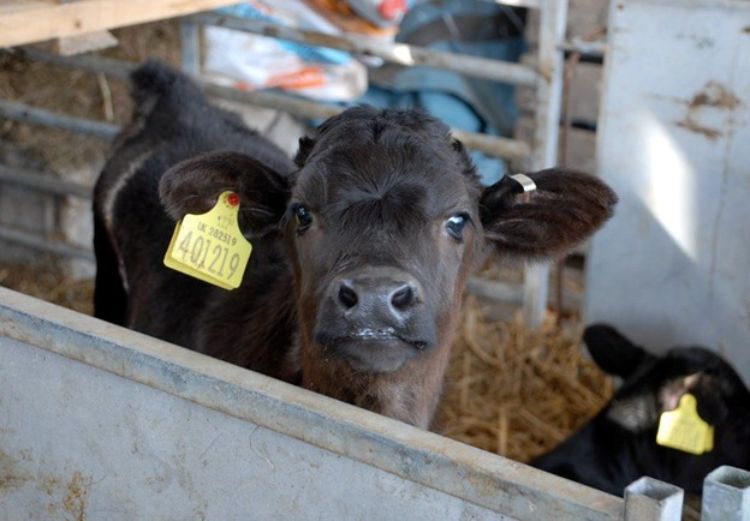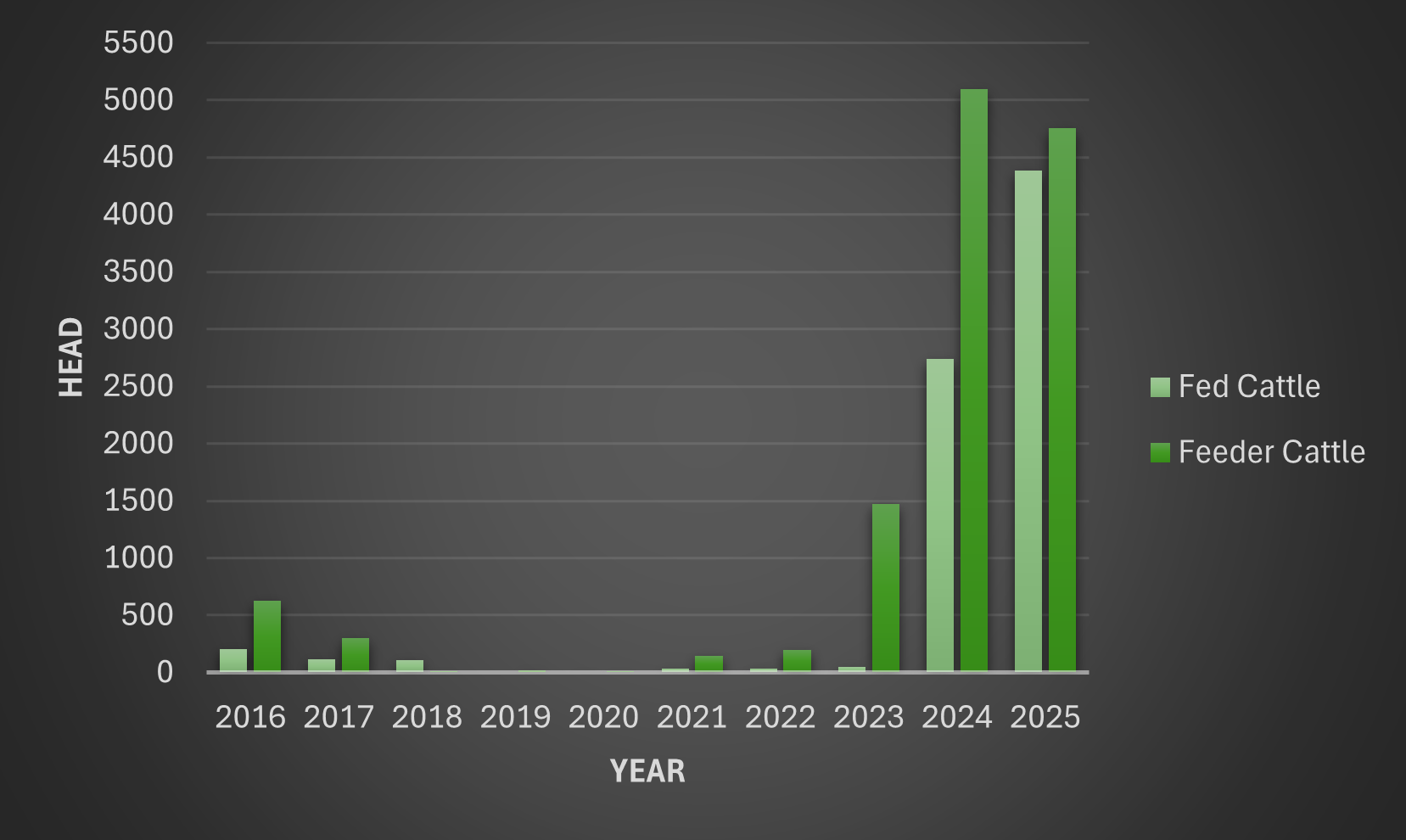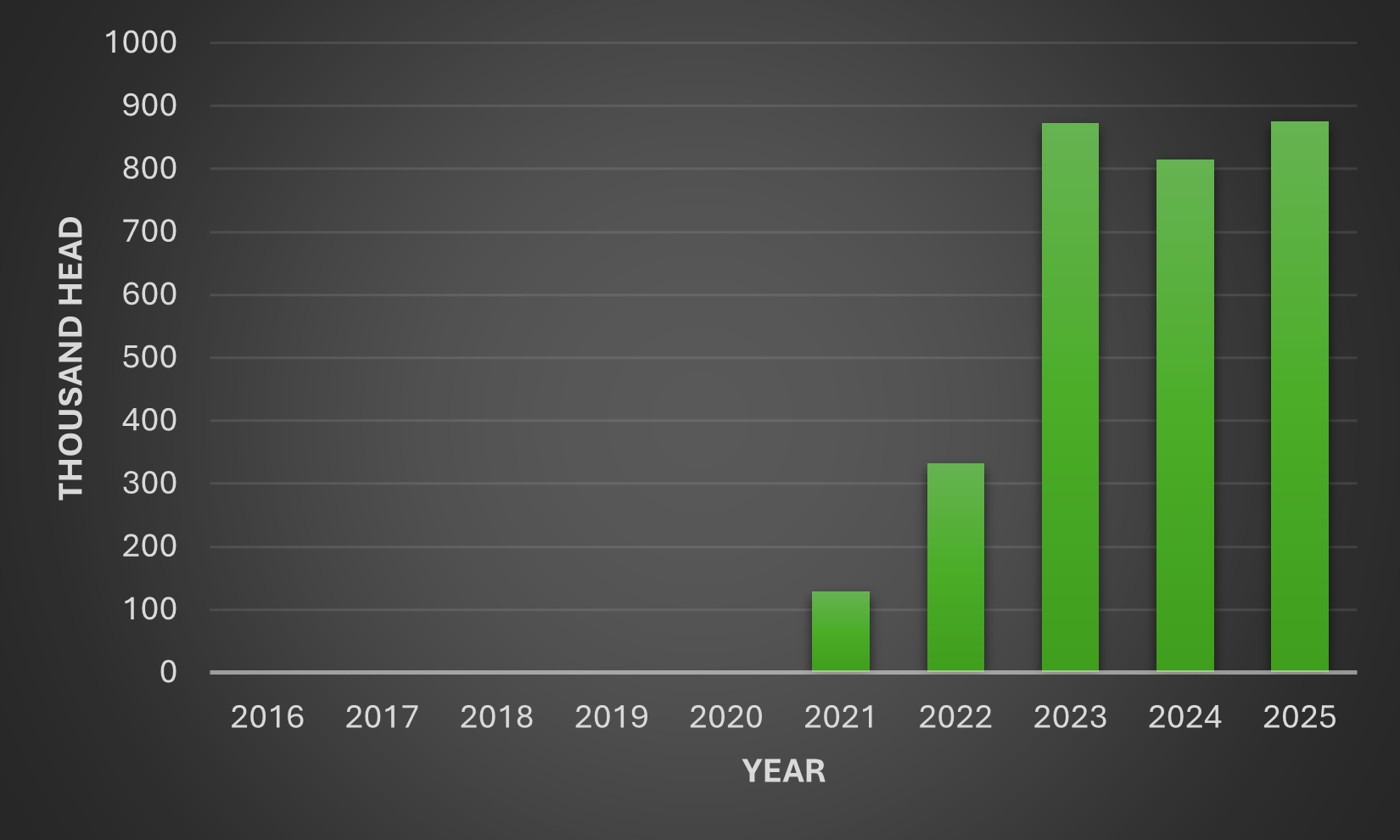Additional Livestock Risk Protection Coverage offers new opportunities for Michigan producers
Use of Livestock Risk Protection insurance continues to increase for feeder cattle, fed cattle, and swine operations in Michigan.

What is Livestock Risk Protection?
Livestock Risk Protection, or LRP, provides protection against price declines in livestock sales. LRP can be a valuable program for farmers, as it helps protect against market downturns, which is particularly relevant in today’s market as beef prices hit all-time highs. High pricing puts producers in a more vulnerable position when the market declines. While LRP helps during market declines, it does not prevent farmers from benefiting from price increases.
Currently, LRP offers three coverage options: feeder cattle, fed cattle and swine. Feeder cattle coverage is used for lighter-weight animals under 1,000 pounds. For cattle 1,000 pounds or above at harvest, the fed cattle coverage plan is used. While feeder cattle coverage offers flexibility over a 13- to 52-week period and attempts to follow market trends, fed cattle coverage locks in a floor price during finishing periods. LRP’s swine coverage is available for hogs between 189 to 351 pounds (live weight) at time of slaughter, with coverage for 30 to 52 weeks for unborn swine and 13 to 30 weeks for those already born.
New coverage options
LRP has recently added two additional coverage categories. These include coverage for dairy cull cows and coverage for unborn calves. Dairy cull cow coverage works specifically for farmers marketing cull cows for slaughter. The coverage period for this option extends 13 weeks from the effective date and targets cull cows weighing 800 to 1,500 pounds.
Beef-on-dairy adoption continues to increase. Coverage for unborn calves targets beef-on-dairy calves and beef calves sold within two weeks of birth. The target weight range is 60 to 99 pounds. Similar to the dairy cull cow option, LRP utilizes the Feeder Cattle Index with a unique price adjustment factor.
LRP usage in Michigan
In Michigan, LRP usage in fed and feeder cattle has seen a sharp increase over the past few years. This follows a nationwide trend in LRP usage, largely driven by increased market volatility and changes in how the program is subsidized. While LRP has been offered since 2003, uptake with livestock producers was relatively low until recent years. However, in 2019, the premium subsidy rate was increased from 13% to 20% of the total premium cost. Then, in 2020, a tiered subsidy rate was set, ranging from 35% for coverage between 95-100% to 55% for coverage between 70-79.99%.
As shown in Figure 1, Michigan saw an exponential increase in coverage over the past decade, with the spike in LRP usage beginning in 2023 for feeder cattle and 2024 for fed cattle. Coverage increased from less than 1,000 head for both feeder and fed cattle in 2016 to approximately 4,400 fed cattle and 4,800 feeder cattle insured in 2025. However, given data limitations, it is difficult to know exactly what share of fed and feeder cattle these figures represent in Michigan.

Figure 2 shows similar trends over the previous decade for swine in Michigan, though USDA’s Risk Management Agency reports no LRP usage from 2016 through 2020. From 2021 to 2023, there is an increase of roughly 800,000 additional head being insured. 2023 to 2025 sees consistently high numbers, with a slight dip in 2024. Again, limited data make determining the share of Michigan’s hogs insured by LRP difficult to estimate.

Michigan reflects national trends in LRP uptake, with large increases in the number of head insured across coverage plans. Due to Michigan’s large dairy industry, there may be a continued increase in uptake as newly introduced options target dairy cull cows and beef-on-dairy calves.
How to enroll
Could LRP be the right fit for your farm? For farmers interested in learning more about this program and if LRP might be a good choice for them, they can review this MSU Extension article: Protect high cattle prices with risk protection, which further discusses protecting high beef cattle prices through LRP. Farmers looking to enroll in LRP can use this locator tool to find a local agency: Agent Locator Search.



 Print
Print Email
Email



